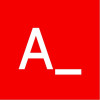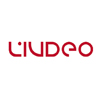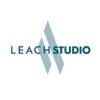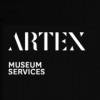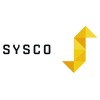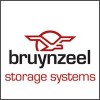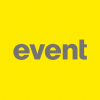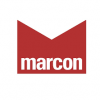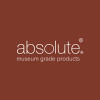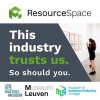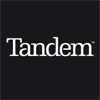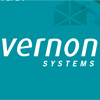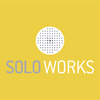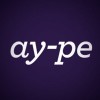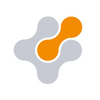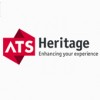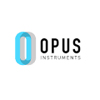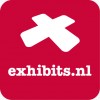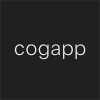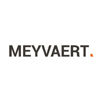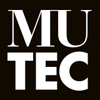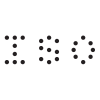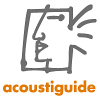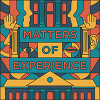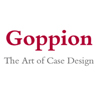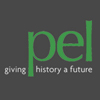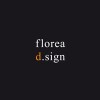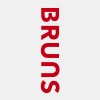Winnie Lai on the transformative experiences created at M+ Rover – a travelling creative studio and exhibition space that tours local secondary schools and community spaces in Hong Kong
 About the author: Winnie Lai is Assistant Curator, Learning and Interpretation, at M+, Hong Kong’s new museum for twentieth and twenty-first century visual culture at West Kowloon Cultural District, scheduled to open in 2019. Prior to joining M+, Winnie worked at the Hong Kong Heritage Museum. She studied History of Art at the School of Oriental and African Studies and University College London, and holds a MA in History of Art and Visual Culture from the University of Oxford and MA in Museum Studies from the University of Sydney. Winnie recently completed a 6-month curatorial attachment at Tate under their Public Programme team.
About the author: Winnie Lai is Assistant Curator, Learning and Interpretation, at M+, Hong Kong’s new museum for twentieth and twenty-first century visual culture at West Kowloon Cultural District, scheduled to open in 2019. Prior to joining M+, Winnie worked at the Hong Kong Heritage Museum. She studied History of Art at the School of Oriental and African Studies and University College London, and holds a MA in History of Art and Visual Culture from the University of Oxford and MA in Museum Studies from the University of Sydney. Winnie recently completed a 6-month curatorial attachment at Tate under their Public Programme team.
M+ Rover is a school and community outreach project launched by the Learning and Interpretation team at M+ in 2015. M+ is a new museum for 20th and 21st century visual culture scheduled to open in Hong Kong in 2020. It is part of the wider West Kowloon Cultural District, a large-scale arts and cultural development project at the Hong Kong harbour front.
The M+ museum will house 17,000 square metres of exhibition spaces, a dedicated learning centre, cinemas, lecture halls and cinemas etc. While the construction of the museum building, designed by the Swiss architectural firm Herzog and de Meuron, is underway, we are at the same time building a collection and a team. Since 2012, the museum has amassed up to 6000 works in the collection, while the team has grown into a medium-size organisation.
A museum is not merely a physical building and the growing team decided to start programming despite not having a physical space. M+ launched a series of nomadic exhibitions in 2012 as a means to explore different way of exhibition-making before we have a permanent home. The series, Mobile M+, ranges from artist commissioning, collection showcase, outdoor installation to online exhibition. Alongside, we also host other programmes such as the symposium series, M+ Matters, and films screening programmes. In 2016, M+ Pavilion opened, giving us a temporary space for exhibition until we move into the actual museum building.
With a diverse pre-opening programming to work with, the Learning and Interpretation team takes it as an opportunity to explore and experiment. We try to gauge an understanding of our potential audience and their knowledge about M+. We soon understand the challenges we face in this pre-opening period. The wider cultural district has been in discussion for over 10 years, while M+ is still a vague idea as it has yet to have a physical presence. At the same time, there is a lack of regularity in our pre-opening programming, and the diverse content makes it harder for audience to have a clear understanding of the future museum. Summarising the experience of programming for exhibitions, we realise the need to build connections and outreach through a more specific and regular approach.
It is under this context that M+ Rover was developed. M+ Rover is a trailer converted into a moving creative travelling studio. It travels to schools and communities during the second school term from March to June. We envisioned it as a space for informal learning where people can simply rest and create; a flexible space where workshops, exhibitions and other activities can take place. The idea of a rover comes from space expedition – we want the participants to be curious, to explore and discover the unknown. We imagined M+ Rover as an alien, a transformer-like object, popping in schools and pockets of the city unexpectedly. Artist Kacey Wong gave form to this idea, covering the trailer with metallic sheets and submarine windows as openings. Using recycled pallets, he creates a contrastingly warmer interior with warm-hue light bulbs and a curved ceiling. He describes entering the M+ Rover as walking in to a whale’s stomach, a space that envelops you with its cozy atmosphere. Designer Milkshxke develops the branding and identity that frames the project, providing the essential infographics for us to communicate the complexity of the project with schools and public.
Every year we invite artists to create a work that has elements of participatory practice. The artwork takes form as a workshop and an evolving exhibition. M+ Rover will enter each school for one to two days, where our team of artist assistants set up the work in school. A group of about twenty-five students are invited to take part in a two-and-a-half-hour workshop lead by the artist. The results of the workshop contribute to the overall display on M+ Rover, which is open during the day for other students and teachers to visit. Over the weekend, M+ Rover travels to different community locations, where the public can visit to the pop-up exhibition. The group of students will then meet with the artist again in the community location through a second part of the workshop, where they can expand the experience and discussion they had in the first session.
With an intention to introduce a variety of practice and ideas, we invite artists that works with different mediums and concepts every year. For the first year, Tang Kwok-hin created a performative piece. The work explores nature of truth and fiction as the students actively shape the course of the plot with clues and prompts. Siu Wai-hang looks at memory and disappearance in relation to history and identity through a photography workshop that centres its idea around the handover of Hong Kong. Comic writer and illustrator, Rainbow Leung, demonstrates the essence of drawing in her practice as an act of listening and relationship-building through a chessboard game where participants have to interview and share stories about themselves as they draw portraits of each other. This year, Ng Ka-chun invites participants to think about our daily needs and alternative ways of living through redesigning objects in our daily life.
“The element of participation is essential – it is a way for us to ensure that we are providing alternatives to the existing formal learning experience”
While diverse in content, the element of participation is essential in all of them. It is a way for us to ensure that we are providing alternatives to the existing formal learning experience. Beside filling a gap, it also gives us the opportunity to break a number of preconceptions and boundaries about artistic practice in general. First, it breaks preconceptions about artists. The artist’s presence is key in the project. Every year we enter nearly thirty schools, ranging from the well-funded and highly resourceful ones, to those that receive close to zero support in the arts discipline. The project allows students to get immediate access to artists by creating a space that brings them together, where they can simply talk and chat. The encounter is the most direct way to dispel any myths about artists, and give them a chance to ask the most practical questions that no parents or teachers can answer as honestly as any working artists: How do you survive and make a living as a full-time artist? What do you actually do? How to enter the field? etc. To carve out time and space for the students to do so proves to be one of the most rewarding aspects of the project; as often, this is a rarity and luxury in the result-oriented educational and examination system, where the most essential are overlooked.
Participatory practice also breaks preconceptions about creative medium. Understanding we are not bringing another classroom teaching on practical skills or theory, we place emphasis on the process as an artistic medium. The project only allows a short encounter between the team and the students at each school, which is between two to three days. We are neither there to criticise nor compete with the existing curriculum, but instead to complement and expand. Therefore, we make sure we are there to stimulate, to be provocative; to show them alternatives, and prompt them to rethink the unconsidered possibilities in their school work as well as life. We invite the artist to think along this line of disruption as they develop the work: how we can question conventions and inspire new imaginations in our students to the full extend in the brief encounters with M+ Rover.

Lastly, it breaks preconceptions about exhibition modes. In the process of developing the work, we actively think about the role of the participants, what are the power-relations at play? What is the level of autonomy and democracy? Essentially, the project is about relationships and experience. It is important that it is about collaboration and co-authorship. The result is that the work is accumulative, taking shape as a pop-up exhibition that evolves as it travels from school to school. Both artists and students participate and contribute to the ever-changing and evolving show. The idea that an exhibition is not complete when it opens but only until its last day breaks the preconception of what our audience and students are used to think of exhibitions. At the same time, the mobility of M+ Rover allows us to reach out to different communities in the city. In the process, we hope to reach out to as much audience as possible.
While ‘participatory’ seems to provide itself as a fitting solution to our cause, it also ruffles up a whole lot more questions than answers. This might seem frustrating at first, but it only serves to remind us that learning is a process that is ever-evolving. As we unravel the challenges at hand, we learn to not merely seek answers or solutions, but embrace the process of enquiry and exploration.
“The project has been an experiment for our team to try out what we can do in terms of museum informal learning before our museum opens”
The project has been an experiment for our team to try out what we can do in terms of museum informal learning before our museum opens in a few years’ time. The evaluation and assessing the programme are important and essential in our practice. As programme organisers, we are often eager to think of assessing the result of a programme. However, the emphasis of the participatory – on collaboration, experience, relationship – means that the ‘results’ are often ephemeral and invisible. We find it inevitable to wonder, how do we measure the effect or results of our programme? How do make sure the participants gain something? How do we meet their expectation? How do we make sure that they have learnt? Do we have to? How to document and measure learning, or is it even possible? When thinking about the discourse of relational aesthetics, how self-reflective does the work set out to be? How better can we connect with communities, and what is our definition of communities? What are the social aspect of the work, is it an event, an exploration of interactions, or a host of dialogues? How to manage the level of uncertainty and fluidity in meaning, while ensuring a rewarding experience? As we turn viewers into participants, we invite them to be part of this creative process and explore these questions together with us. Actively think about evaluating the process, we sometimes wonder, did learning ever happen? This question, while provocative, seems to perfectly summarise the constant reflection and evaluation process we go through as we programme.
There is never a straight answer to all these – learning is, after all, a personal and internal process. Soon enough in the process, we realise with whom we are learning with and what lessons are there to be learnt for us as organisers. As we actively think about co-creation and shared authorship in the process, we are learning with the participants. While we think about the participants’ roles, and the level of autonomy in their participation, it becomes a constant reminder that learning cannot be forced. The most effective learning comes organically and naturally. Everyone’s need differs, thus, to attempt to cater for everyone is nearly impossible and might result in unnecessary compromises. It is about creating the best conditions and setting for the encounter to happen, where participants can decide what they take from the scenario. When the participants realise they have a part and a role in the process, they felt empowered in a way that they start to take initiates in shaping the work. As a result, the learning becomes specific to the individuals.

Another goal of the project is to build long-term relationships with teachers and schools. We would like to establish the museum as a resource for the teachers. Thus, along with the programme, we create teaching materials and held teaches’ briefings. We make sure that we maintain a continuous communication with them throughout the process and through post-workshop evaluation sessions. These dialogues help us better understand their expectations and overall experience, and as a result, contribute to the shaping of our programme in the following years. For example, the optional pre-workshop sessions are developed as a result from the first year’s evaluation, commenting on a need to provide background information on participatory art practices in general. We continue to do such meet-ups with the participating teachers and educators that we work with in order to maintain relationships where we can learn and grow together.
At the same time, we are learning with the frontline team. Our frontline team of artist assistants are responsible for setting up the exhibition every day at schools, maintaining the condition of the works, assisting and documenting during the workshops, and leading tours about the project to visitors. Most importantly, they are the main participants to the project, the only witnesses to the work that evolved from beginning to end. They are often the first to experience the work, sometimes, still at its development process where they can provide feedbacks. We also provide training and meet-the-artist sessions before M+ enters schools. Working closely with the artist, they became the closest to the work. As one of the most important participants, they can contribute and shape the work with the artists and the school participants. At the same time, what we found as a result is a sense of community among the group who are often fresh graduates. With the project, we create a time and space where they can get to know the artists and the team at M+, and also for them to gain more knowledge about working in the arts field.
Lastly, the team worked closely and learnt immensely with the artist in the process. The unique nature of M+ Rover is that it defies definition – sitting between a workshop, exhibition and an artwork. There are not many artists in Hong Kong that are actively engaged with participatory work as their main practice. Throughout the process as we develop the work, we delve into the artist’s practice and philosophies. As the project pushes them to examine their practice, it also pushes us to do the same on our end, to rethink our practice as curators. In the process we have to consider a number of conflicting ideas: How do we manage different, at times conflicting, priorities and expectations – of the artist’s, the school’s and ours? As a result, the work has to be rehearsed and rethought, scraped and redeveloped. The process is bound to be painful. It is through such intense process that both the team and artists felt the work is complete and unique for its context. It also requires honesty and trust between the team and the artists, giving us a valuable chance to build understanding and trusting relationships with the artists.
“Transformative experience cannot be staged. What we do is create the setting and space for an unexpected encounter to happen”
As a takeaway of our team’s experience, we learnt to remind ourselves that it is about understanding those we learn and grow with and knowing where these events of learning and exchanges take place, rather than seeking a measure or indicator of success. Ultimately, the process of learning is ongoing and invisible; and sometimes, it requires a level of faith and trust as much as the careful planning and organisation we put in. It is a reminder for us to learn to let go of this need and urgency to look for a result or success. Instead, we learn to embrace a level of unknown and uncertainty. Transformative experience cannot be staged. What we do is create the setting and space for an unexpected encounter to happen, where interaction and conversation take place and where important relationships are formed. That is when the magic of learning happens – much like planting a seed in anticipation of its growth – with equal measures of care and hope, we continue to imagine the many forms it can take shape.
Winnie Lai
Assistant Curator, Learning and Interpretation, M+, Hong Kong
Published 21.03.18





